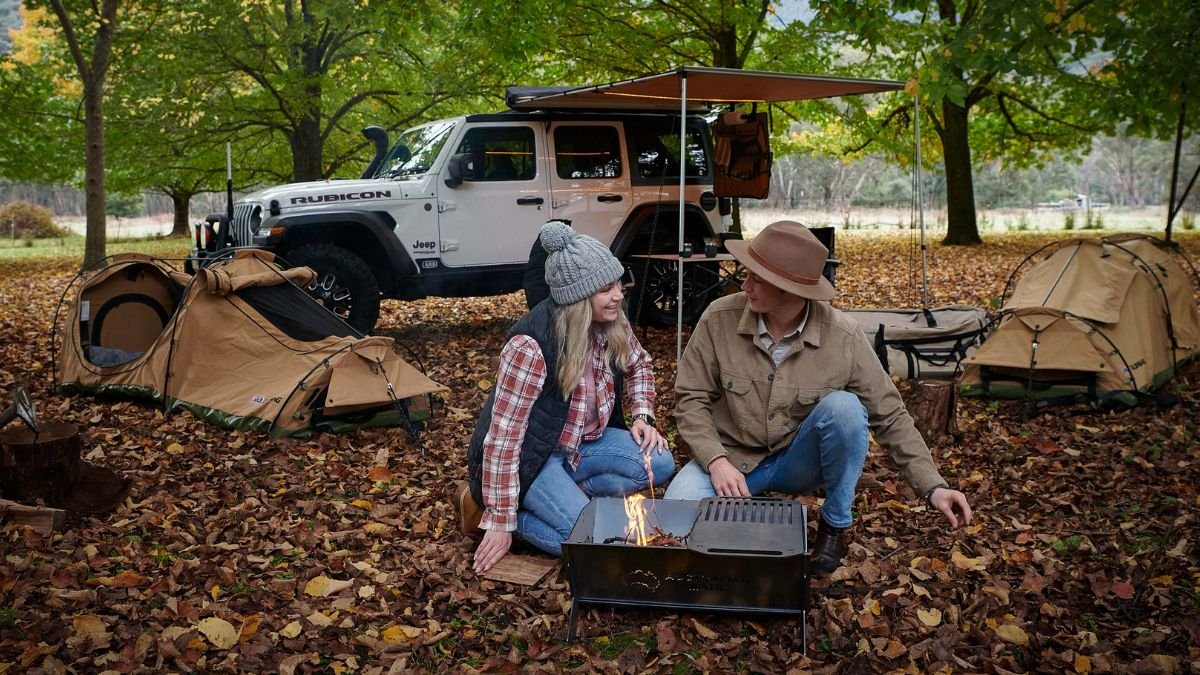You’ve seen those best van life photos. The smiling couples. The pristine sunsets. The “built our dream van for $6,000” captions. They make van life look easy and cheap. It’s not.
Van life influencer content sells you a fantasy while hiding the expensive reality. Those beautiful posts don’t show the transmission failures, insurance nightmares, or emergency room visits that can quickly drain your savings.
We learned this the hard way. Our research into van life influencers led to $15,000 in unexpected costs within just six months. Every “budget-friendly” tip cost us more money. Every “essential” product recommendation emptied our wallet.
How van life costs compare to influencer claims. The hidden expenses that no Instagram post mentions. How to Create Realistic Van Life Budgets That Work. Red flags to spot in van life content before you spend your money.
Van life reality includes problems, repairs, and expenses that social media often doesn’t show you. We’ll give you the honest breakdown that van life influencers won’t.
The Van Life Influencer Lie That Cost Us $15,000
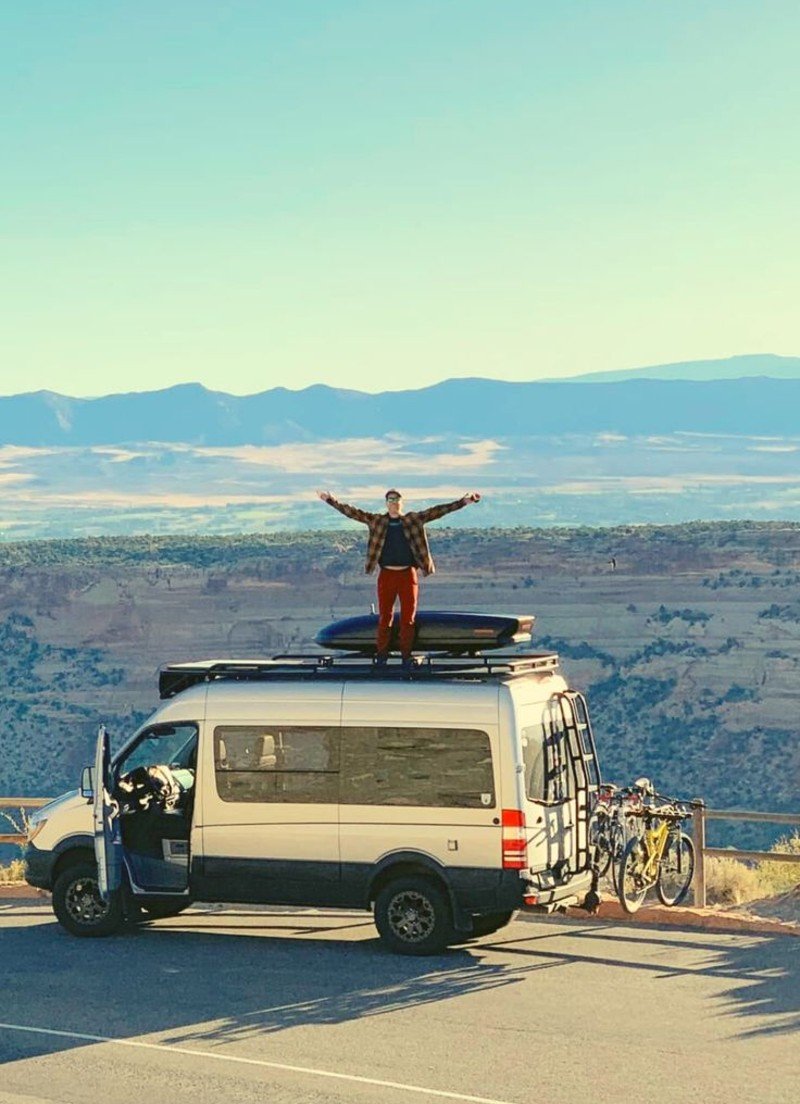
We fell for it hard. Those perfect sunrise photos. The “total van conversion for under $6,000” posts. The smiling couples who made van life look like a permanent vacation.
@AdventureVanCouple showed their build for “$5,200 total.” @NomadLifeGoals claimed “$7,500 including the van.” We saved $8,000 and thought we were being generous.
Here’s what those van life influencer posts showed: Finished glamour shots. Clean, organized spaces. Happy couples in great lighting. The final result is with zero mess, stress, or problems visible.
They hide the failed attempts. The expensive mistakes. The times they called professionals to fix their “DIY” work. The brand sponsorships covered their real costs. Our actual van life costs hit $15,000 in the first six months. Not because we went crazy. Because reality doesn’t match Instagram.
The real breakdown:
i. Van purchase: $4,500 (seemed reasonable)
ii. Conversion materials: $3,200 (matching influencer budgets)
ii. Tools we didn’t own: $800
iii. Mistakes and do-overs: $2,100
iv. Emergency repairs: $2,800
v. Professional help: $1,600
That’s $15,000. Triple our influencer-inspired budget. Van life influencers underreport van conversion costs for simple reasons:
Money. They make income from affiliate links. The cheaper they make it look, the more people buy through their links.
Engagement. “$5,000 van build” gets way more clicks than “$15,000 van build including everything.”
Selective memory. They forget about the extra costs. Or they don’t count them as “conversion costs.”
Free stuff. Brands give them products. But you’ll pay full price for the same gear.
Professional help. Many use contractors but call it “DIY.” You’ll need that same professional help.
Van life influencer content is marketing, not education. They don’t prepare you for real van life costs. The average van conversion costs $15,000-$25,000 when you include everything. Monthly van life expenses run $1,500-$3,000 for most people.
Hidden Van Life Costs Influencers Never Mention
You budget for solar panels and a bed frame. You don’t budget for your transmission dying in Utah. Van life influencers show you the fun stuff. They skip the expensive surprises that drain your savings fast. Here are the van life costs that hit us when we least expected them.
i. Vehicle Breakdowns Hit Different on the Road

Our 2008 Chevy Express looked solid. The seller said it ran great. Three weeks into van life, the transmission started slipping.
Repair bill in Salt Lake City: $2,800.
Two months later, the alternator died in rural Oregon. No cell service. No AAA. We paid a tow truck $400 to get us to town, then $650 for parts and labor.
Our total breakdown costs: $4,500 in six months.
Most vans that people buy for conversions are older. Older vehicles break down more. Repairs cost extra when you’re far from home and need the work done fast.
Van life influencers usually drive newer vans or have mechanical skills. They don’t show you the repair bills because it kills the dream.
ii. Insurance Companies Hate Converted Vans
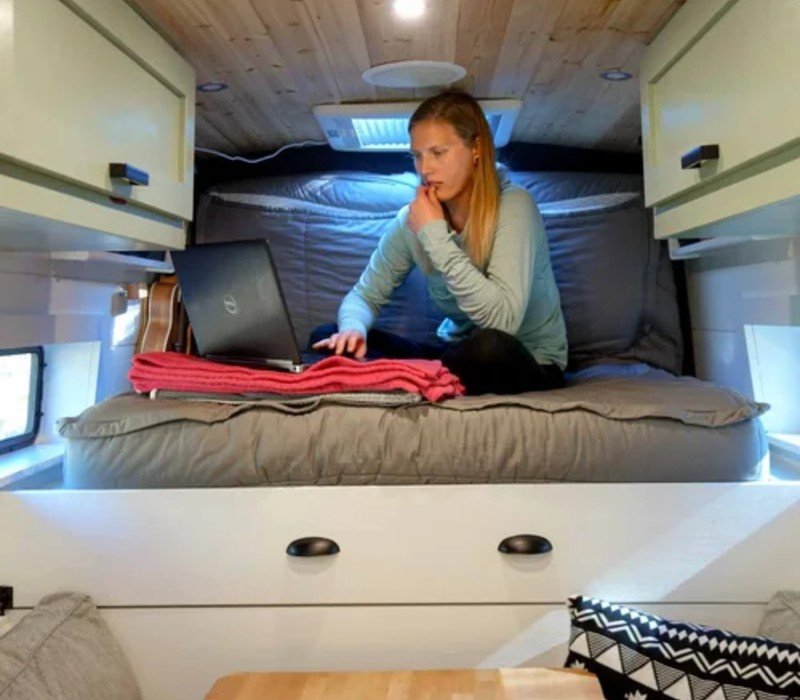
Your regular auto insurance won’t cover a converted van. You need specialty coverage. Our insurance before conversion: $89/month. Our insurance after conversion: $247/month
That’s an extra $1,896 per year. No van life influencer mentions this van life expense in their budget posts.
Insurance companies see converted vans as higher risk. More equipment to steal. More fire danger from DIY electrical work. More claims occur when people live in their vehicles full-time.
iii. Boondocking Fails Cost Money Fast
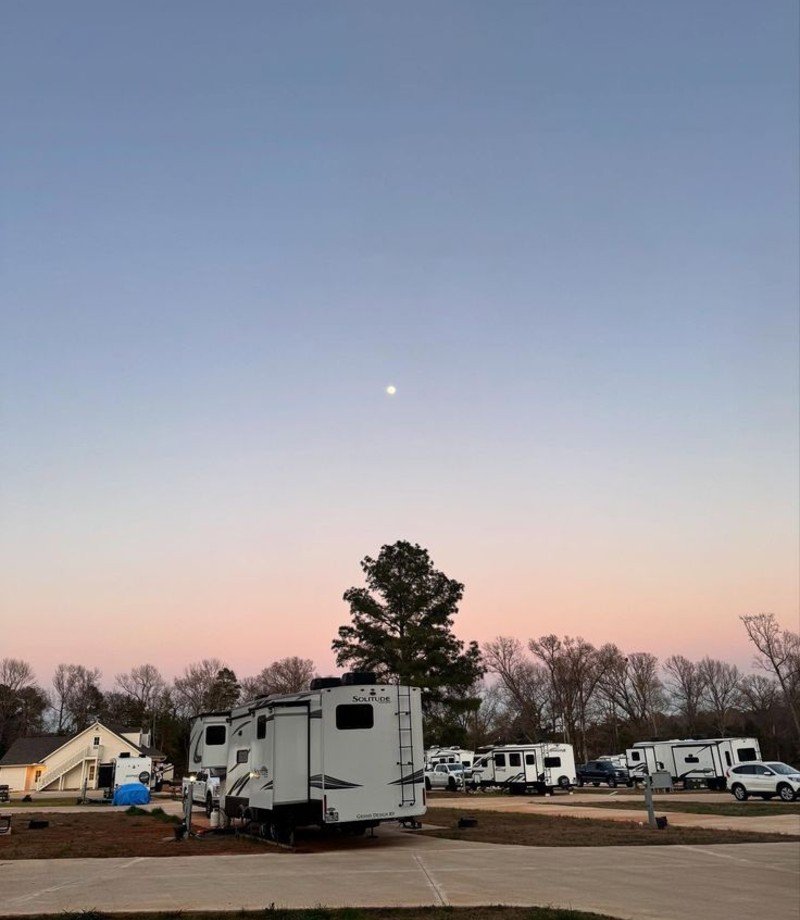
Instagram makes wild camping look easy. Just park anywhere and enjoy free camping. Times we couldn’t find free camping: 47 nights out of 180. Average campground cost per night: $35 Total campground fees: $1,645
Sometimes you can’t find free spots. Sometimes the weather is too bad for boondocking. Sometimes you need a shower or laundry. Sometimes the “free” spot gets too crowded or unsafe.
Van life influencers show the perfect free camping spots. They don’t show you paying $45/night at an RV park because everything else was full.
iv. Your Stuff Needs to Go Somewhere
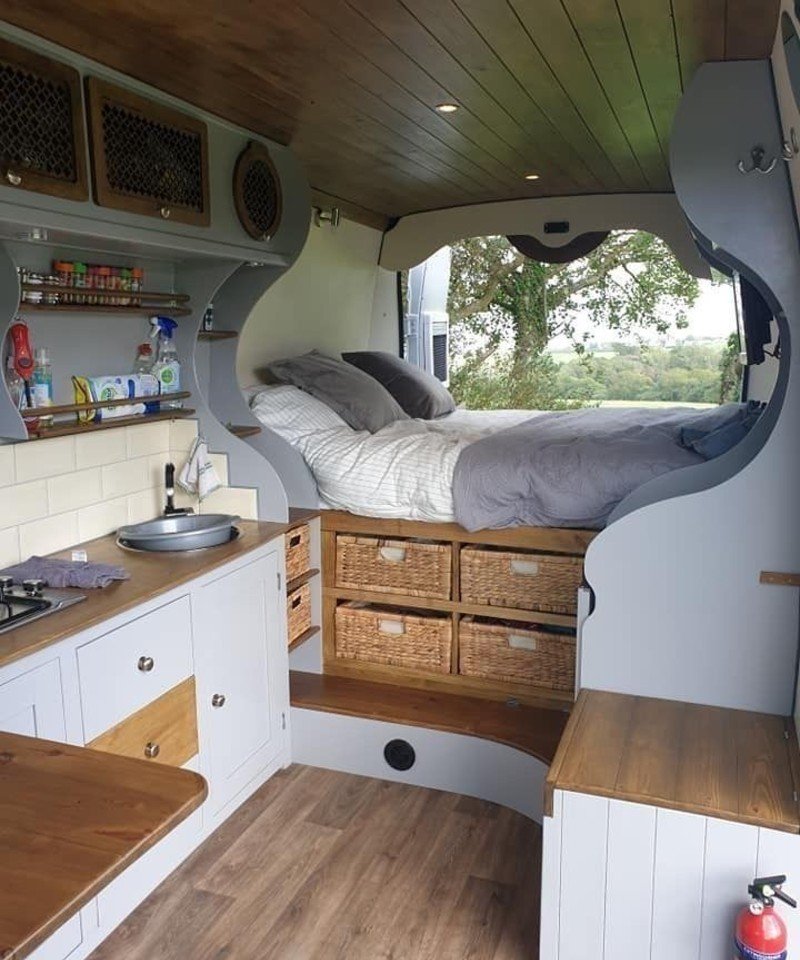
You can’t fit a four-bedroom house’s worth of stuff in a van. Most of your belongings need storage. Storage unit rental: $125/month Annual cost: $1,500
We tried to sell everything before hitting the road. Didn’t work. Important documents, seasonal clothes, family photos, and backup furniture all went into storage. This van life cost adds up fast. Some people pay for storage the entire time they’re on the road.
v. Medical Emergencies Get Complicated
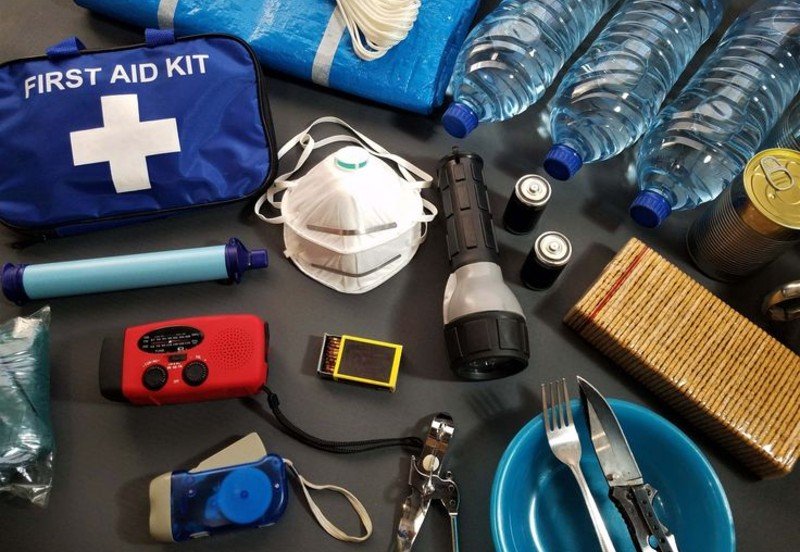
Health problems don’t stop for van life. But getting care gets harder when you don’t have an address. Emergency room visit in Arizona: $2,400. Follow-up care complications: $800
The hospital needed a permanent address for billing. Our mail forwarding service didn’t count. We had to list a family member’s address and deal with insurance confusion for months.
Prescription refills get tricky, too. Your pharmacy is 2,000 miles away. Finding new doctors takes time you don’t have when you’re sick.
How Van Life Influencers Make Money (While You Spend Yours)
Ever wonder how van life influencers afford their perfect builds and constant travel? They’re not just living the dream. They’re running a business.
i. Every Link Makes Them Money
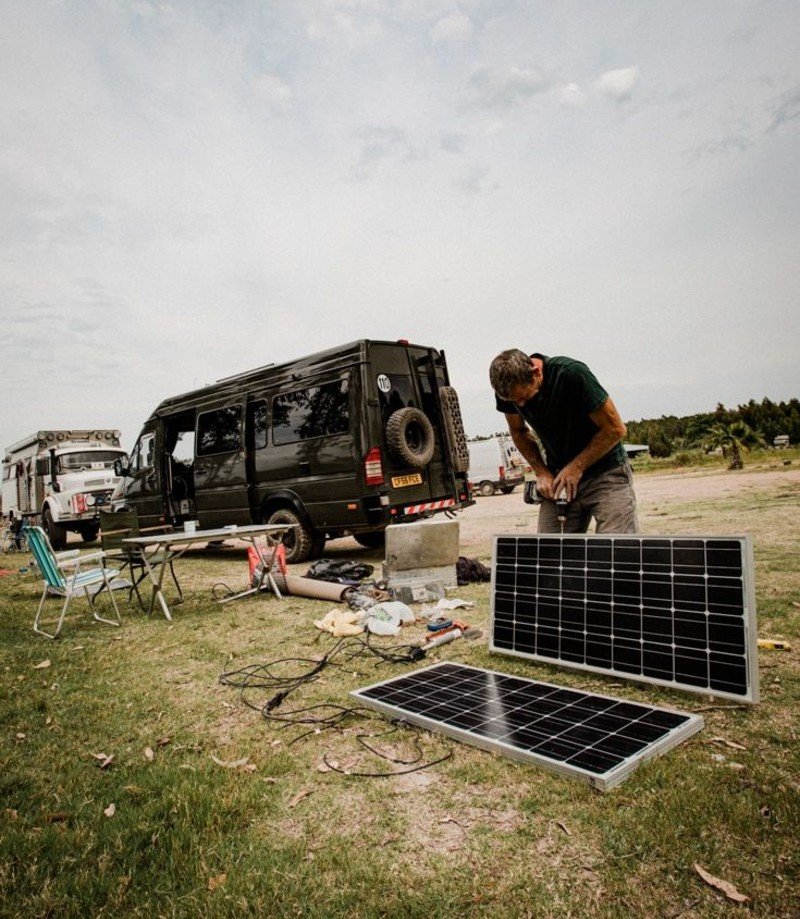
That solar panel your favorite van life influencer recommends? They get paid when you buy it. Influencers get special links. When you click and buy, they earn 3-10% of the sale price. For a $2,000 solar setup, that’s $60-$200 in their pocket.
@VanLifeExperts made $847 in one month just from their “essential gear” list. We bought five items from that list and spent $1,200. They earned $84 from our purchases alone. They only recommend products that pay them. The best product for you might not have an affiliate program.
ii. Brands Pay for “Honest” Reviews
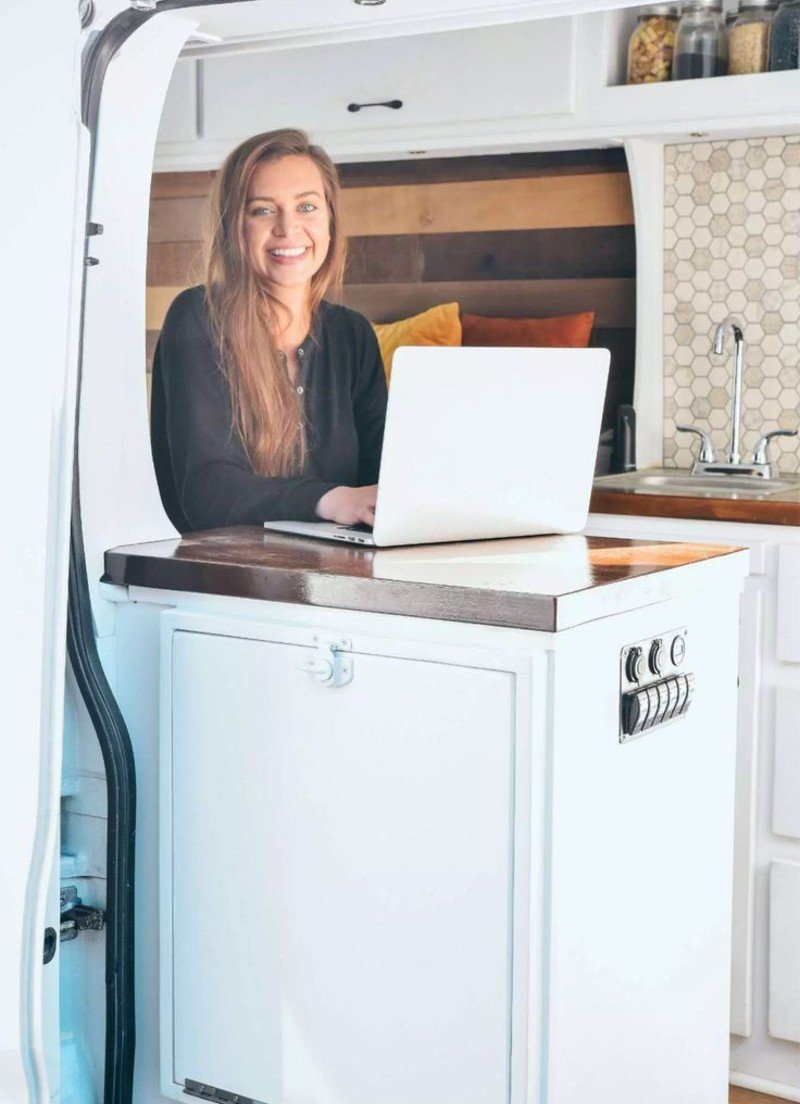
That video where they “test” different camp stoves? The winning stove probably sponsored the video.
Sponsored content rates for van life influencers:
i. 10K followers: $500-$1,000 per post
ii. 50K followers: $2,500-$5,000 per post
iii. 100K+ followers: $5,000-$15,000 per post
@AdventureCouple has 75K followers. One sponsored post pays for their entire monthly van life budget. They post sponsored content 2-3 times per week.
The fine print? They have to show the product in a positive light. “Honest review” doesn’t mean honest when money changes hands.
ii. Courses and Coaching Cost You More

“Learn how we built our van for $8,000!” Then they sell you a $497 course with the “real secrets.”
Popular van life courses charge:
i. Basic guides: $97-$197
ii. Complete systems: $297-$697
iii. One-on-one coaching: $150-$300/hour
@NomadAcademy sells a $597 van conversion course. They need just 50 sales per month to earn $30,000. That’s more than most people’s entire van life budget.
The course teaches you to buy the same affiliate products they already promote. You pay twice – once for the course, once for the gear.
iii. Free Gear Changes Everything
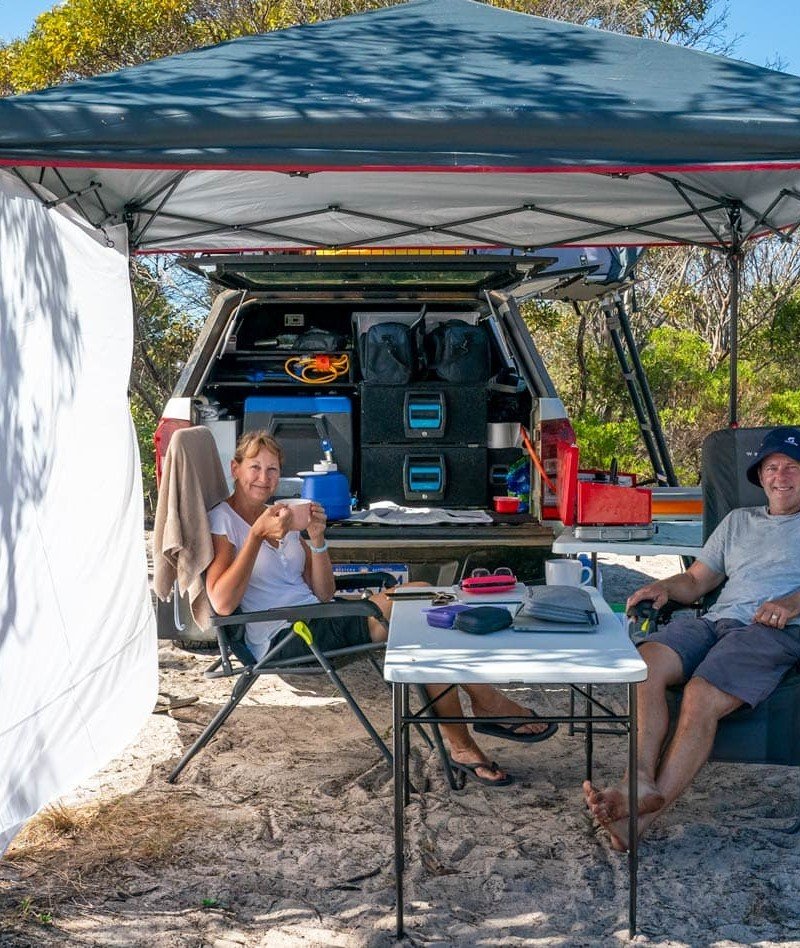
Van life influencers get thousands of dollars in free products each month. You see them using expensive gear and assume you need it too.
Free products we saw influencers receive:
i. $1,500 solar systems
ii. $800 refrigerators
iii. $600 awnings
iv. $400 water systems
v. $300 camp chairs
They built their “$8,000 conversion” with $4,000 worth of free gear. Then they sell you a course on how to do it for $8,000.
iv. Why This Creates Bad Advice
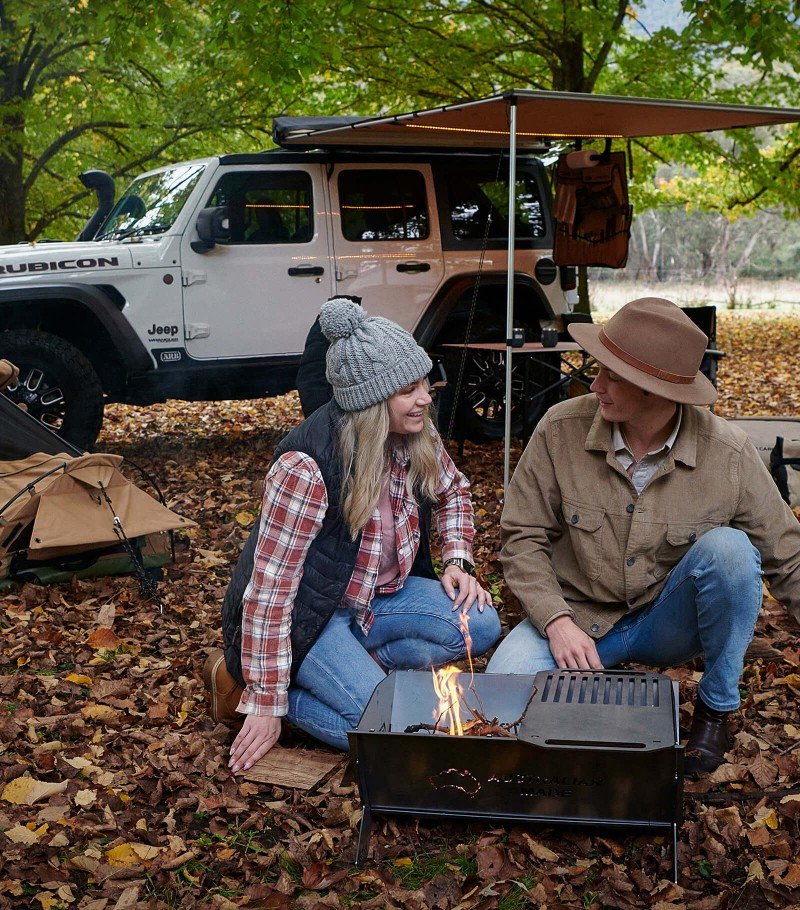
Van life influencer income depends on you buying things. Not on you succeeding at van life. They recommend expensive solutions because they pay better commissions. They skip budget alternatives that don’t have affiliate programs.
They make van life look easier to keep you buying courses. They hide problems that might scare away potential customers
Real example: Every van life influencer recommends Renogy solar panels. They pay 8% commissions. Battle Born batteries pay 10% commissions. Cheaper alternatives like used panels or different battery types don’t have affiliate programs. So influencers never mention them.
The Van Life Mistakes That Cost Us the Most Money
Smart people make dumb mistakes when they’re excited. We made five expensive van life mistakes that cost us $6,000 extra.
i. We Bought a Van Without a Real Inspection
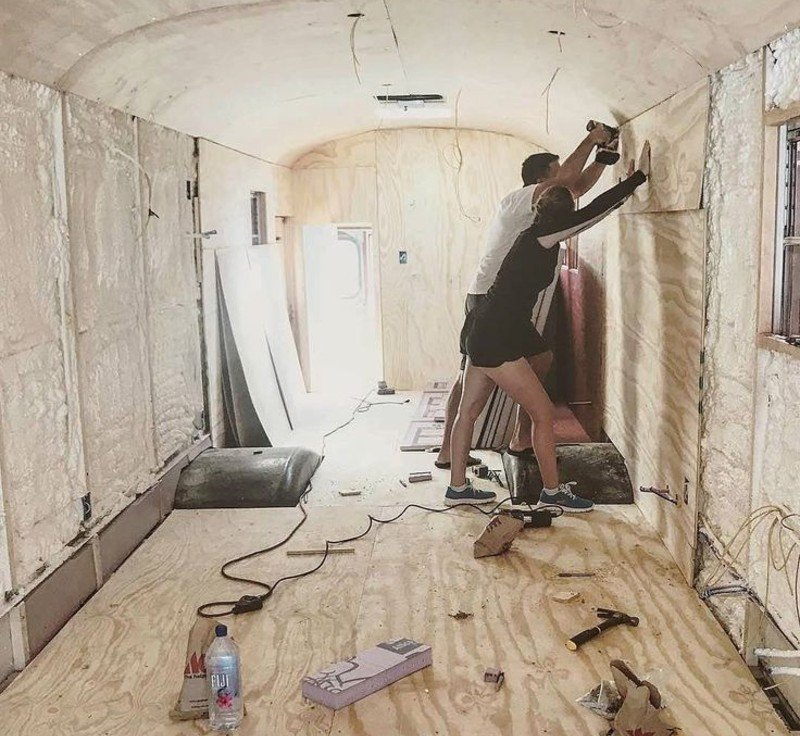
The seller seemed honest. The van looked clean. It started right up and drove smoothly on our test drive. Big mistake.
What we missed: The transmission was slipping. The brake lines had rust. The electrical system had been hacked by the previous owner. The cooling system leaked.
What it cost us: $6,200 in repairs over four months.
A proper pre-purchase inspection costs $150-$300. We skipped it to save money and “trust our gut.” Our gut was wrong by about $6,000.
The van life reality: Most vans for sale have problems. Sellers know how to hide issues during short test drives. You can’t see transmission problems, electrical shorts, or rust damage without proper tools and experience.
What we should have done: Hired a mechanic to inspect the van before buying. Every single time. No exceptions.
ii. We Rushed Our Van Conversion

Instagram made van conversions look fast and easy. Build in two weeks, hit the road, live the dream. We tried to finish our van conversion in three weeks.
Rushing costs us:
i. $800 in wrong materials we had to replace
ii. $600 in damaged tools from working too fast
iii. $1,200 to hire professionals to fix our mistakes
iv. $400 in extra trips to hardware stores
Total rushing penalty: $3,000
What went wrong: We cut holes in the wrong places. We bought the wrong size lumber twice. We wired our electrical system backwards and fried our charge controller.
When you rush, you make mistakes. Van conversion mistakes are expensive to fix.
Better approach: Plan for 6-8 weeks minimum. Take time to measure twice, cut once. Ask for help when you’re confused.
iii. We Didn’t Budget for Being Beginners
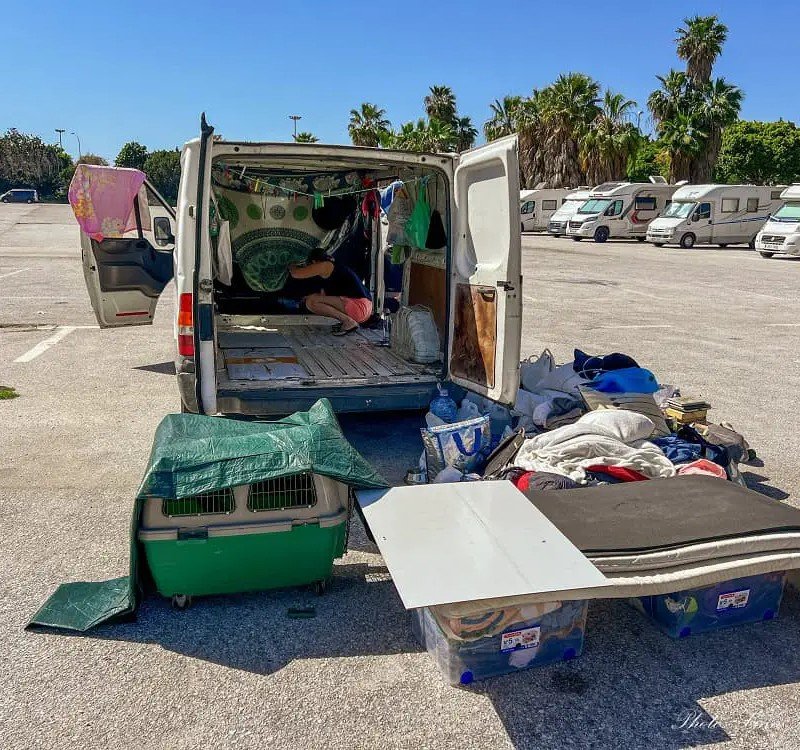
We’d never built anything bigger than IKEA furniture. But we thought we could convert a van like the pros we saw on YouTube.
Learning curve expenses:
i. Extra tools we didn’t know we needed: $600
ii. Materials wasted on practice and mistakes: $500
iii. Professional help when we got stuck: $800
Beginner tax: $1,900
Van life influencers make conversions look easy because they have experience. Or they don’t show you their mistakes and do-overs.
The truth: Your first van conversion will cost more and take longer than you think. Budget an extra 30% for learning expenses.
How to Research Van Life Realistically (Not Through Instagram)
Instagram research almost cost us $15,000. Here’s how to research van life without falling for pretty pictures and fake budgets.
i. Start With Real Van Life Communities
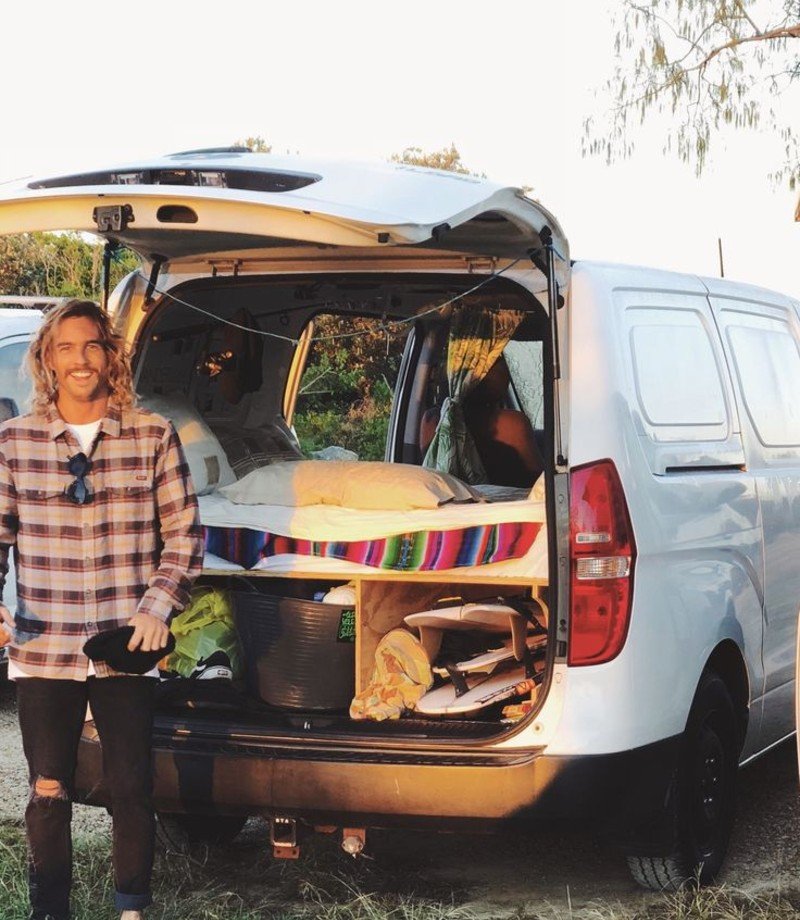
Reddit’s r/vandwellers has 1.2 million members sharing real experiences. No affiliate links. No courses to sell. Just people helping people.
CheapRVLiving forums focus on budget van life. Members post actual receipts and detailed breakdowns. You’ll find honest discussions about failures and problems.
Nomadic Fanatic Facebook groups have regional chapters. Local members know the real costs for your area and can recommend mechanics, campgrounds, and cheap supplies.
ii. Ask Van Lifers These Specific Questions

Don’t ask “How much does van life cost?” Ask detailed questions that get honest answers:
For van purchases:
i. “What repairs did you need in your first year?”
ii. “What would you check differently when buying again?”
iii. “How much did insurance increase after conversion?”
For conversions:
i. “What tools did you buy that you only used once?”
ii. “Which materials would you skip if you built again?”
iii. “How many times did you have to redo electrical work?”
For daily life:
i. “How often do you pay for campgrounds?”
ii. “What’s your actual monthly fuel cost?”
iii. “How much do you spend on food compared to house living?”
These questions get past the highlight reel and into van life reality.
What Van Life Actually Costs: A Real Budget Breakdown
Forget the “$5,000 van build” posts. Here’s what van life costs when you include everything.
i. Van Purchase and Conversion: $25,000-$45,000
Van purchase costs:
i. Decent used van: $8,000-$15,000
ii. Pre-purchase inspection: $200-$400
iii. Immediate repairs: $1,000-$3,000
Conversion materials:
i. Basic build: $8,000-$12,000
ii. Mid-range build: $12,000-$20,000
iii. High-end build: $20,000-$35,000
Tools and supplies: $1,500-$3,000. Professional help: $2,000-$5,000. Why it costs more than influencers claim: They get free products, have existing tools, and don’t count mistakes or do-overs in their budgets.
Recent surveys show the average van conversion costs $32,000, including the van purchase. That’s six times higher than most influencer claims.
ii. Monthly Van Life Expenses: $2,000-$4,000
Fuel: $300-$600/month depending on miles driven Food: $400-$800/month (eating out costs add up fast) Campgrounds: $200-$500/month (free camping isn’t always available) Insurance: $150-$300/month for converted van coverage Phone/internet: $100-$200/month for reliable connectivity Maintenance: $200-$400/month average (some months zero, some months $2,000) Miscellaneous: $300-$500/month for clothes, supplies, entertainment
Regional cost variations. West Coast: 30-50% higher than the national average. Popular national parks: $40-$60/night camping fees. Rural areas: 20-30% lower costs. Winter destinations: Higher fuel and campground costs
iii. Emergency Fund: Save $10,000 Minimum
Van life emergencies happen fast and cost big money:
Major repairs: $3,000-$8,000 for transmission, engine, or electrical issues. Medical emergencies: $2,000-$10,000 without good insurance
Vehicle replacement: $5,000-$15,000 if your van dies completely
Real example: Our friends needed a new engine in Colorado. $6,500 repair bill with no payment plan options. Cash only.
Most van lifers who quit do it because of emergency expenses they can’t afford.
iv. Income Requirements for Sustainable Van Life
Minimum income needed: $3,000-$4,000/month after taxes Comfortable income: $4,000-$6,000/month after taxes Luxury van life: $6,000+/month after taxes
Why do you need more than your monthly expenses? Van life costs vary wildly month to month. Some months cost $1,500. Other months cost $6,000 when major repairs hit.
Work challenges: Reliable internet costs extra. Finding quiet spaces for calls is hard. Some jobs don’t work well from the road.
Real survey data: 67% of van lifers earn income while traveling. 23% work seasonally. 10% live off savings only.
The average van lifer surveyed spends $3,200/month on all expenses. That’s $38,400 per year just for basic van life costs.
Add your expenses (subscriptions, hobbies, travel activities), and most people need $45,000-$55,000/year income for comfortable van life.
Bottom line: Van life costs way more than social media shows you. Budget realistically, or you’ll join the 40% of new van lifers who quit within one year due to money problems.
FAQs
What should I budget for van life?
Plan for $30,000-$45,000 for van purchase and conversion, plus $2,500-$4,000 per month for living expenses. Keep a $10,000 emergency fund minimum. Most successful van lifers need $45,000-$55,000 annual income after taxes.
How can I tell if van life influencer advice is trustworthy?
Look for red flags: round numbers in budgets, no mention of problems or mistakes, affiliate links on every recommendation, and perfect timing on everything. Trustworthy sources share actual receipts, discuss failures openly, and don’t constantly sell products.
What are the biggest hidden van life costs to prepare for?
Vehicle breakdowns ($3,000-$5,000 yearly), insurance increases ($100-$200 extra monthly), campground backup fees ($200-$500 monthly), storage unit rental ($75-$200 monthly), and medical complications without a permanent address ($500-$2,000 yearly).
How much money should I save before starting van life?
Save at least $50,000 total: $35,000 for van and conversion, $10,000 emergency fund, plus 3-6 months of living expenses ($7,500-$15,000). Many new van lifers quit within one year due to money problems.

